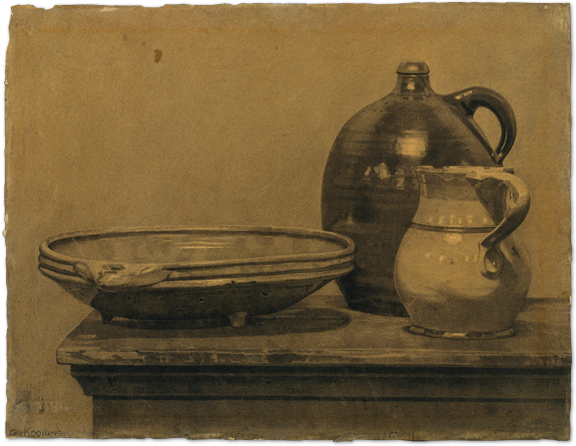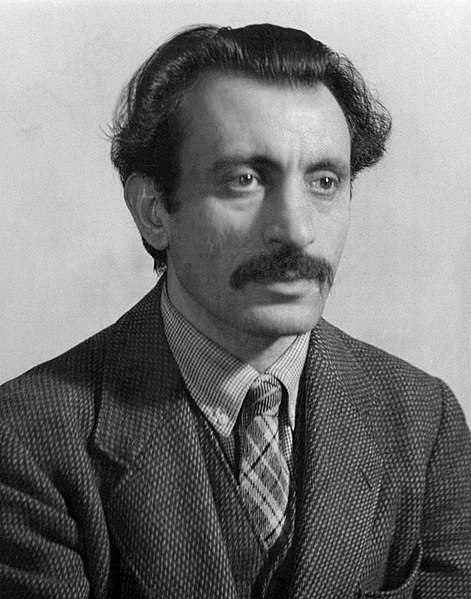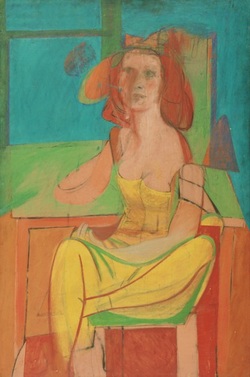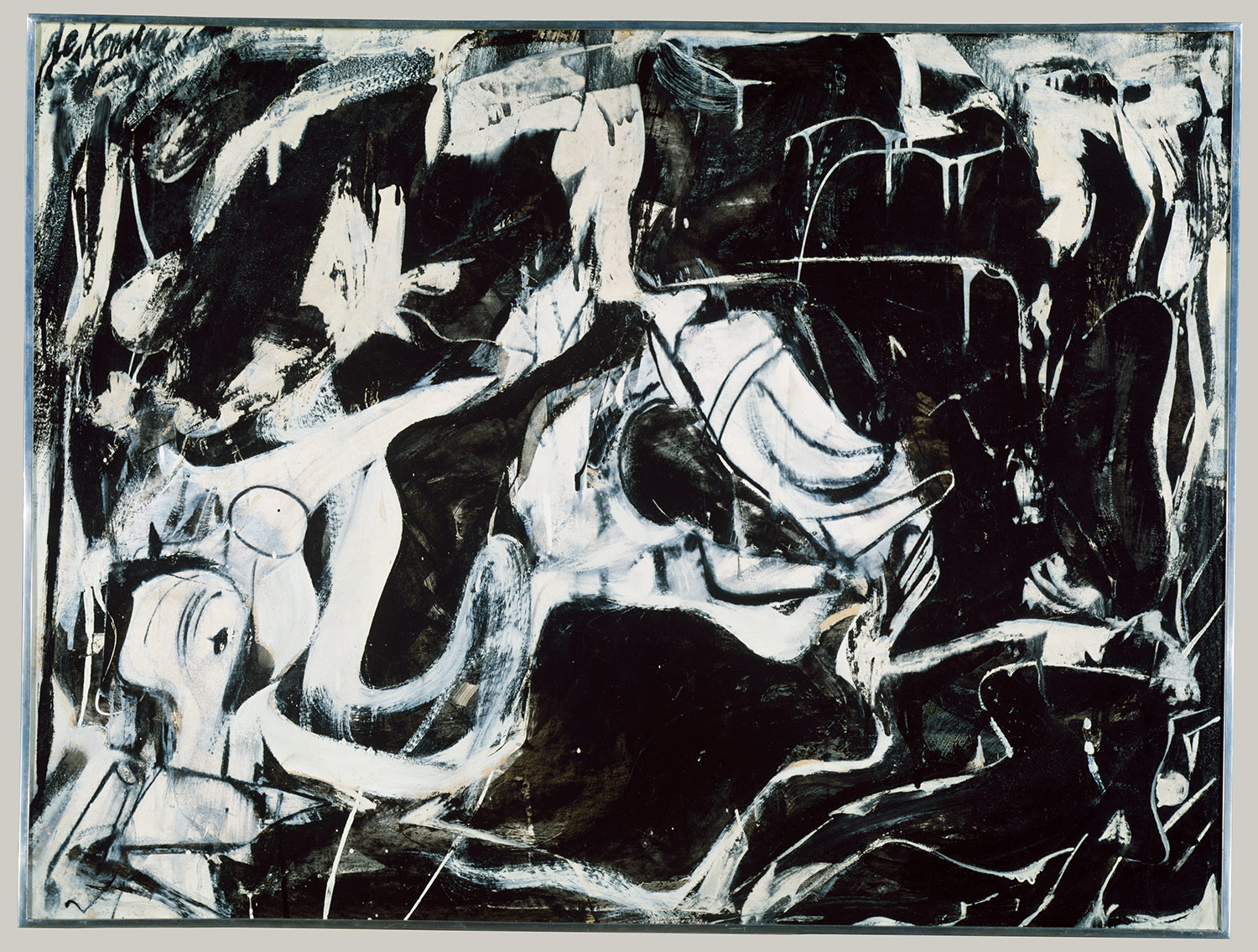Some of you may be wondering how I ended up becoming an artist. Truth be told, I am still quite amazed at how life had unfolded for me. My journey was not a smooth one.
My first encounter with art was when I was 12. Quite a late age don't you think? I became an apprentice at this firm called Gidding and Sons in the heart of Rotterdam. They're a bunch of talented artist and craftsmen who specialized in design and decoration. Despite the amount of talent concentrated there, somehow I managed to grab the attention of the owner but for the life of me, I can't remember his name anymore. That's a shame since I am forever indebted to him - he's the one who convinced me to really join the Rotterdam Academy of Fine Arts and Techniques. Thank you kind sir.
So the next chapter in my art journey began. I was studying in the academy and I considered myself very lucky: I've learnt about commercial design from the time I worked as an apprentice and now I got to learn about the more refined principles of high art. Below are a few paintings I did as a student. Ah, the memories...
 |
| Still Life (1916/17) by Willem de Kooning 34.3 x 38.1 cm Oil on Cardboard The painting I did when I was 13 years old |
 |
| Still Life (Bowl, Pitcher, aand Jug) (1921) by WIllem de Kooning Did this 4 years later. Still very proud of it! |
As it turned out I'm quite mistaken. There were indeed serious artists but almost all of them were poor. But that's what fascinates me; their devotion to the arts. There's one more thing that finally convinced me to become an artist though. I've told you that I met a lot of artists, but then I met Gorky. Arshile Gorky, to be precise:
 | ||||||
| "If you were serious, you studied the work of modernist masters such as Picasso, Matisse and Miró, and you aspired to equal or better their achievement," he said last time. Whoa. |
And that was how I finally became a full-time artist.
However, his modernist ideas, which I really admired, clashed with my classical training, which I also quite like so that was a horribly rough period for me. You can ask my friends (or perhaps the garbage man) how many canvasses I threw out last time.
Then, along comes Elaine:
 |
| Portrait of Elaine (1940) by Willem de Kooning "I was a lot of fun," Elaine said in an interview quite recently. "I mean a lot of fun." And yeah, I can't agree more. |
I guess the two of them had a significant impact on my works. Gorky planted the idea of departing from classic art convention, and Elaine was the one who finally gave me the courage to do so:
 |
| Seated figure (male classical) (1939) by Willem de Kooning |
 |
| Seated Woman (1940) by Willem de Kooning |
 |
| Standing Man (1942) by Willem de Kooning |
 |
| Queen of Hearts (1943) by Willem de Kooning |
 |
| Portrait of Master Bill (1929 - 1936) by Arshile Gorky You see how Gorky influenced me? |
 |
| Dark Pond (1948) by Willem de Kooning Enamel on composition board |
 |
| Black Untitled (1948) by Willem de Kooning Oil and enamel on paper |
 |
| Untitled (1948) by Willem de Kooning Oil and enamel on paper |
But I think something good did come out of it in the end...I had my very first solo exhibition that year at the Charles Egan gallery. Not a big one, and only a few paintings were sold but at least it got people talking about me.
I decided to explore this style further and was a bit pleasantly surprised that people compared me to Jackson Pollock:
 |
| Attic (1949) by Willem de Kooning |
 |
| Excavation (1950) by Willem de Kooning |
But I still feel that my works still bear more 'resemblance' to the real world than Pollock's work and that is not necessarily a good or a bad thing. I respect Pollock. Every so often, a painter has to destroy painting. Cezanne did it, Picasso did it with Cubism. Then Pollock did it. He busted our idea of a picture all to hell. Then there could be new paintings again.
But for me, even abstract shapes must have a likeness. I just feel that I'm more suited to draw human figures and so, to the surprise of a lot of people, I ditched black and white paintings and focused back on human figures. Or maybe to be precise, I should say, women:
 |
| Woman I (1952) by Willem de Kooning |
 |
| Woman II (1952) by Willem de Kooning |
 |
| Woman III (1953) by Willem de Kooning |
And that I guess somewhat summarizes my journey of being an artist. Even though the Women series may seem to be my most popular series, I did not stop there. I continued experimenting in many, many different styles. With my dementia nowadays, it would be difficult for me to tell you why I painted certain paintings that way. All I can say is that after the Women series I paint with bolder and less messy lines. Sometimes completely random things inspired me too such as...
Highways:
 |
| Montauk Highway (1958) by Willem de Kooning |
 |
| Villa Borghese (1960) by Willem de Kooning |
 |
| Untitled (Landscape) (1977) by Willem de Kooning |
 |
| Untitled XII (1985) by Willem de Kooning |
 |
| Untitled (1988) by Willem de Kooning |
That is all for now, everyone! Bless your heart and see you next time!
sources:
http://www.smithsonianmag.com/arts-culture/willem-de-kooning-still-dazzles-74063391/?page=1
http://arthistory.about.com/od/artistsaz/a/Artists-Quotes-Willem-De-Kooning.htm
Hello Willem!
ReplyDeleteI am truly fascinated by your transition from a naturalistic painter to that of an abstract practitioner. As someone who does highly simplified sculptural forms, I think that I am still learning how to appreciate the art of abstraction! I feel that simplification and abstraction of forms both encompass very different qualities (I really cannot understand why art critics call me an abstract sculpture when I have clearly drawn the line for them). One thing in common that I feel both of us have in common, and that is the comprehensive understanding that we both have of naturalistic forms, and your draughtsmanship is really outstanding I sincerely applaud you for the high level of technical skill :) You are really someone I respect, as I can see that your abstract works have actually been through a developmental process that I feel all abstract artists should go through (but not all do sadly and are sometimes fluffy in their justifications?)
Press on with your art!
Brancusi